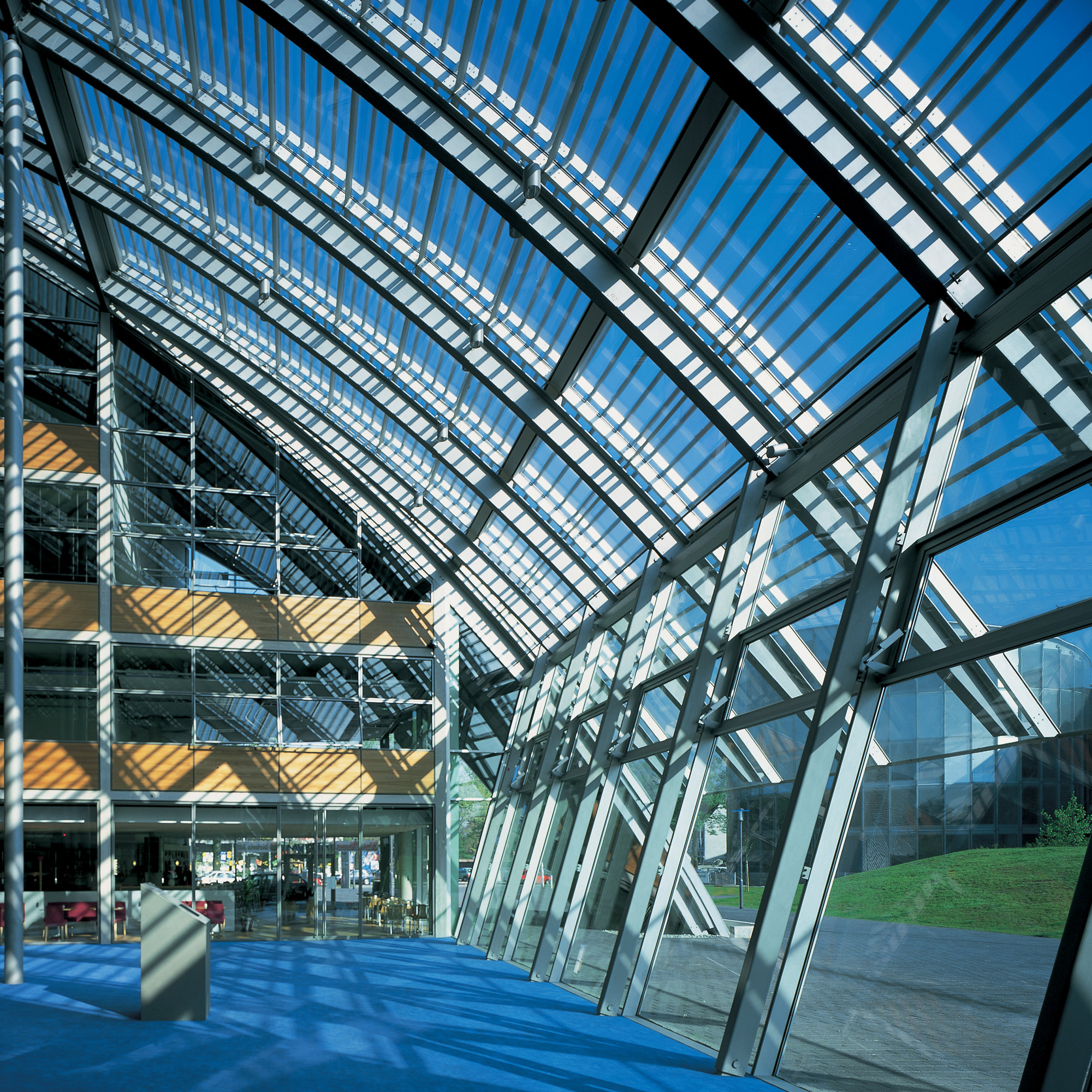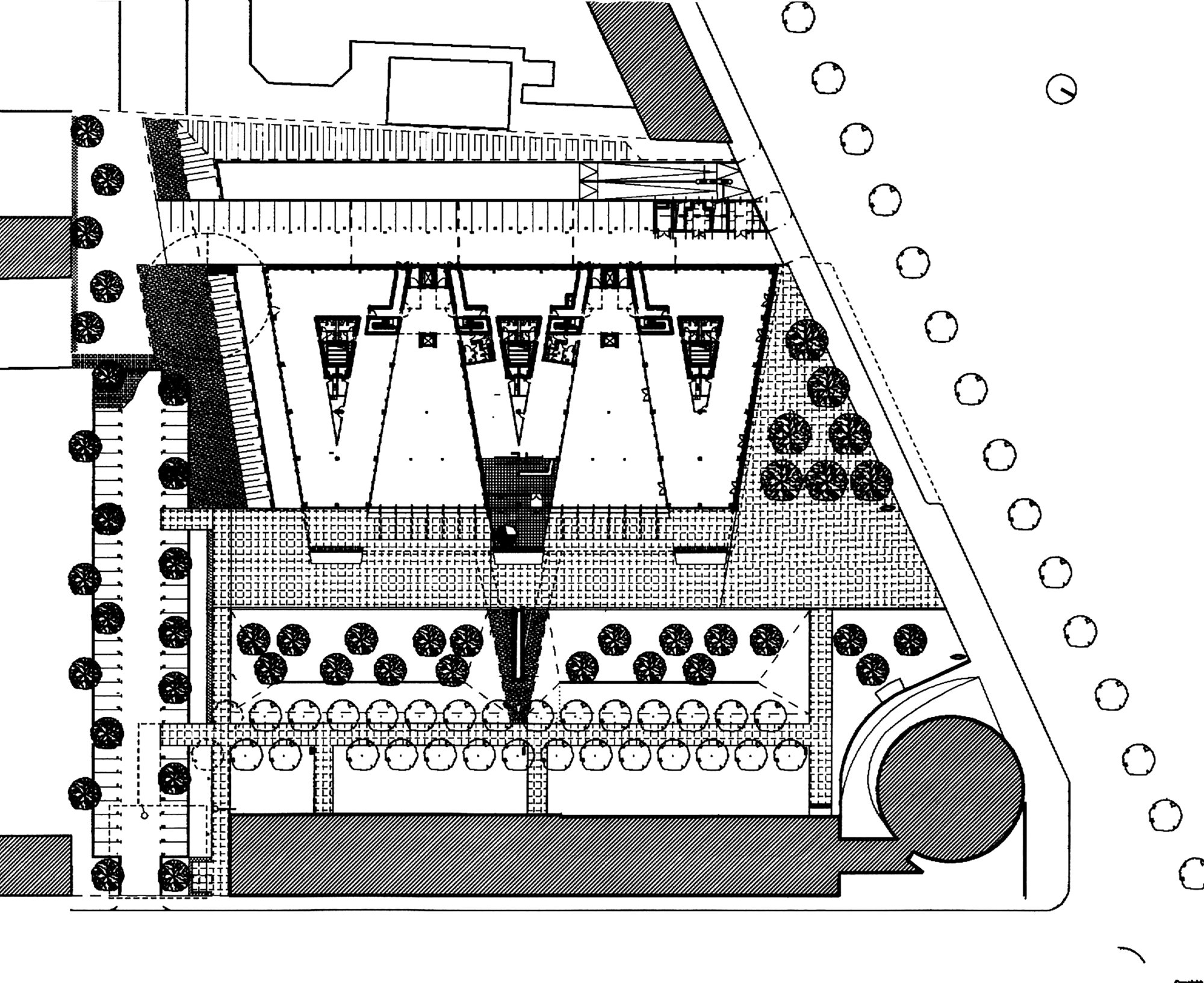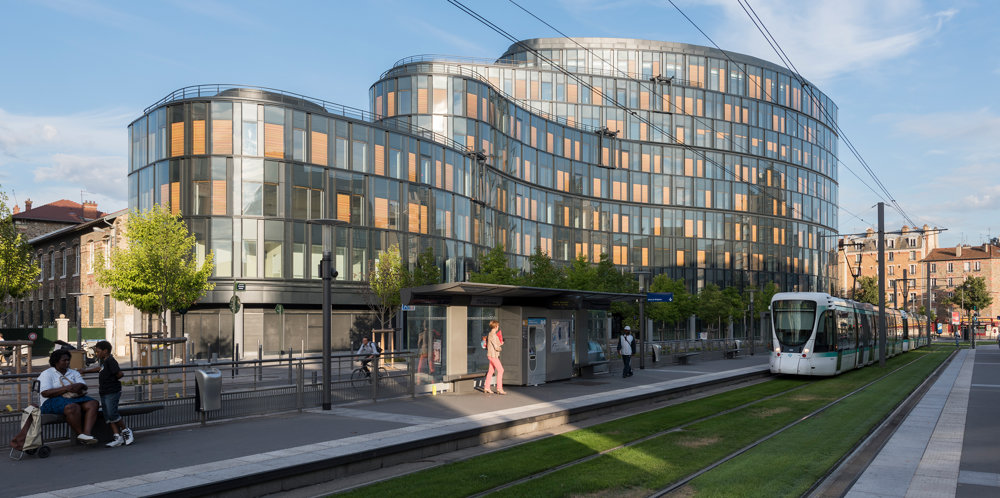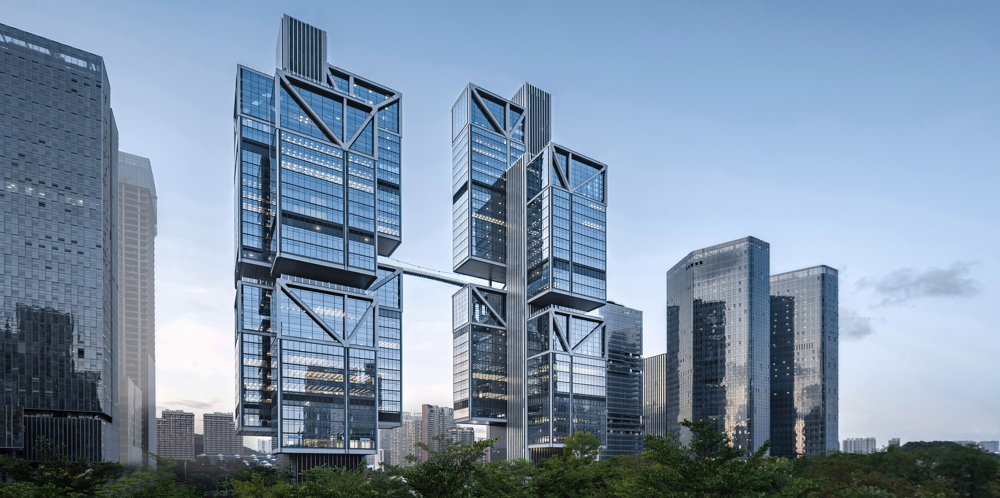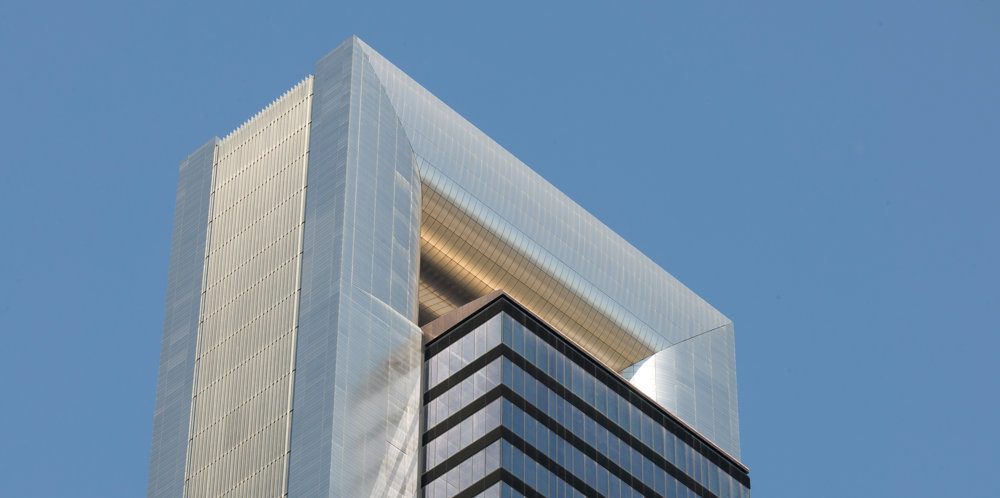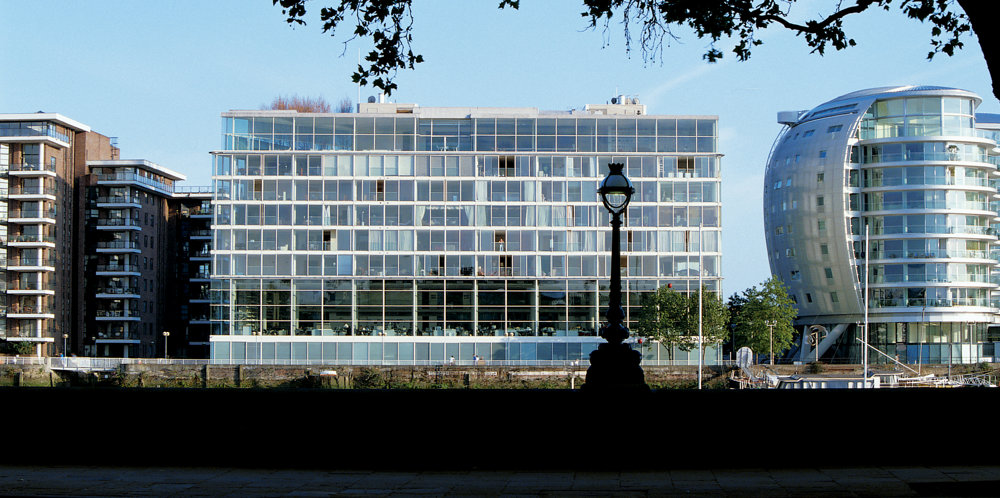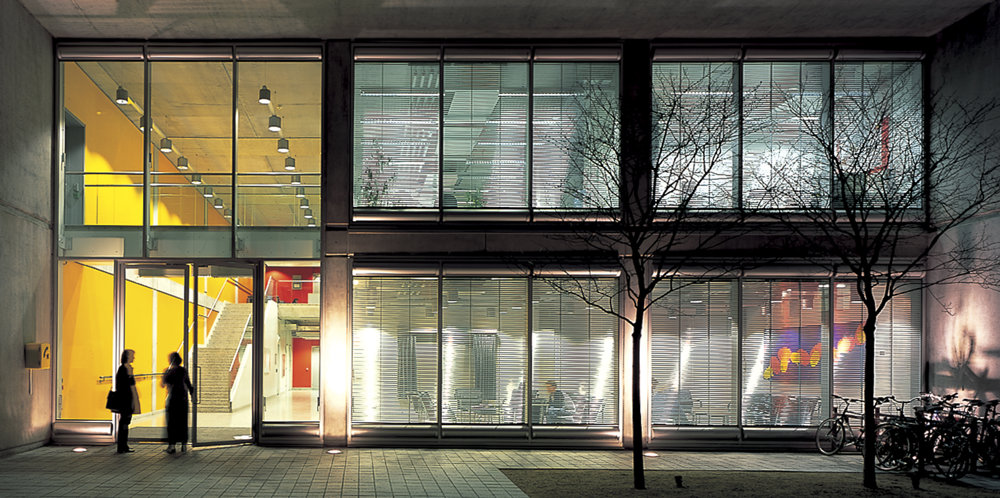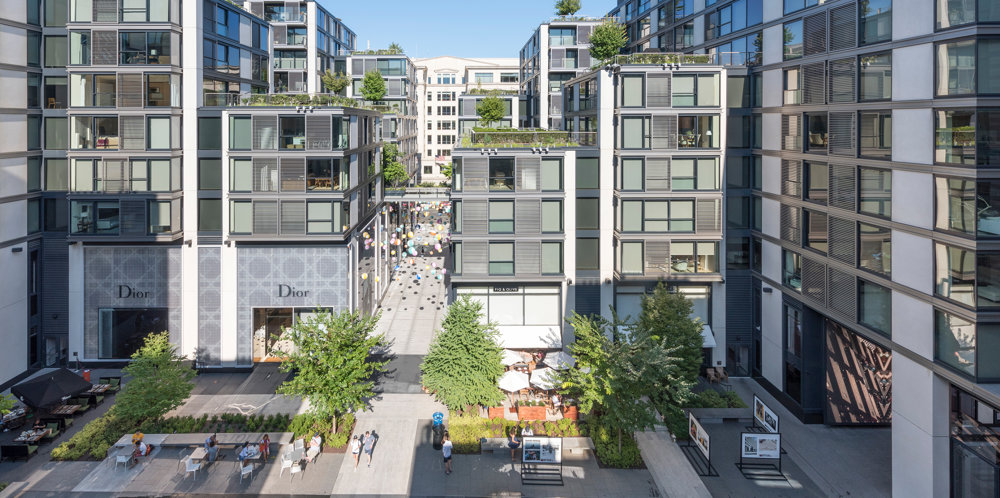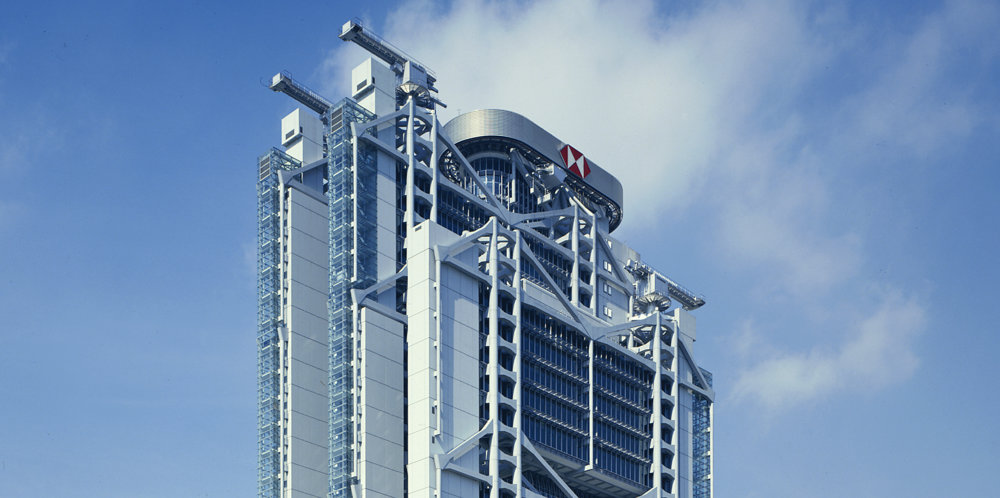The practice’s work in Duisburg began almost twenty years ago with the Microelectronic Park, which integrated buildings for new-technology companies, and created a new linear park, within a dense residential district. It demonstrated the potential to create attractive, mixed-use neighbourhoods that combine places to live and work. The underlying themes of that project were reinforced by the 1991 masterplan for the physical and economic regeneration of the Inner Harbour – the final piece of which is Eurogate – where new construction was combined with selective refurbishment to connect the waterfront with the centre of Duisburg, and establish a new urban quarter with all the amenities of the modern city.
Given the trend towards clean and quiet manufacturing industries, the potential exists to create new kinds of neighbourhoods which integrate places to live, work and play. In 1988 a masterplan was established to integrate new technology companies — which are replacing the old heavy industries of the Ruhr heartland — within a residential district of Duisburg. The first of the practice’s German projects to be realised, Duisburg brought with it new attitudes towards energy and ecology that would inform a range of schemes developed during the 1990s.
The masterplan creates a landscaped public park and three new buildings. The focal point of the development is the Telematic Centre. Circular in form, with offices arranged around a full-height atrium, it houses the management centre for the entire complex and provides space for small and medium-sized companies. The forum at the heart of the building provides a public space for exhibitions, conferences and musical performances, together with a restaurant and bar.
The largest building on the site, the Microelectronic Centre, provides multi-use flexible accommodation, such as laboratories, production areas, classrooms, offices and meeting rooms. Within an overall climatic envelope, three fingers of accommodation are articulated by two glazed atria, which create a sheltered buffer zone for exhibitions and cafés. A variety of passive cooling and shading devices is employed to minimise energy consumption.









